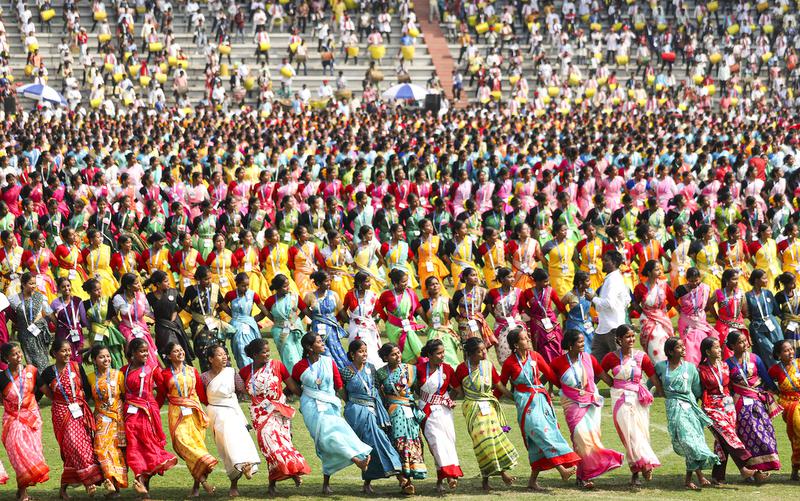Jhumoir Binandini (Jhumur) Dance

- 25 Feb 2025
In News:
The Prime Minister of India is set to attend the Jhumoir Binandini (Mega Jhumoir) 2025, a grand cultural event featuring around 8,600 performers showcasing the traditional Jhumur dance. This event highlights the rich cultural contributions of the tea tribe community of Assam.
About Jhumoir (Jhumur) Dance
- Jhumur, also known as Jhumoir, is a traditional folk dance performed predominantly by the Adivasi tea tribes of Assam.
- It is typically showcased during the harvest season, as well as on occasions like weddings and community festivals.
- The dance was introduced to Assam by the tea garden workers, who originally migrated from regions like Jharkhand, Odisha, Chhattisgarh, and West Bengal in the 19th century under British colonial rule.
Cultural Origins and Community
- The dance traces its roots to the Sadan ethnolinguistic group from the Chotanagpur plateau (present-day Jharkhand).
- The tea tribe community is a multi-ethnic group comprising descendants of migrant tea garden laborers.
- These communities have significantly shaped Assam’s socio-cultural landscape.
Performance Style and Attire
- Jhumur is performed in a circular formation, with dancers often holding each other's waists.
- The performance features rhythmic footwork, swaying movements, and energetic music.
- Women typically wear colorful sarees, often in red and white, while men dress in dhotis and kurtas.
- The musical accompaniment includes traditional instruments like the Madal, Dhol, Dhak, Taal (cymbals), and Flute.
Themes and Social Significance
- Jhumur songs blend liveliness with social commentary, often highlighting the struggles, exploitation, and migration experiences of the tea plantation workers.
- Major tea garden festivals where Jhumur is performed include Tushu Puja and Karam Puja, both celebrating the harvest.
- The dance fosters community bonding, promotes cultural pride, and represents Assam’s syncretic cultural heritage.
- It stands as a symbol of inclusivity, unity, and the resilience of the tea tribe community.
